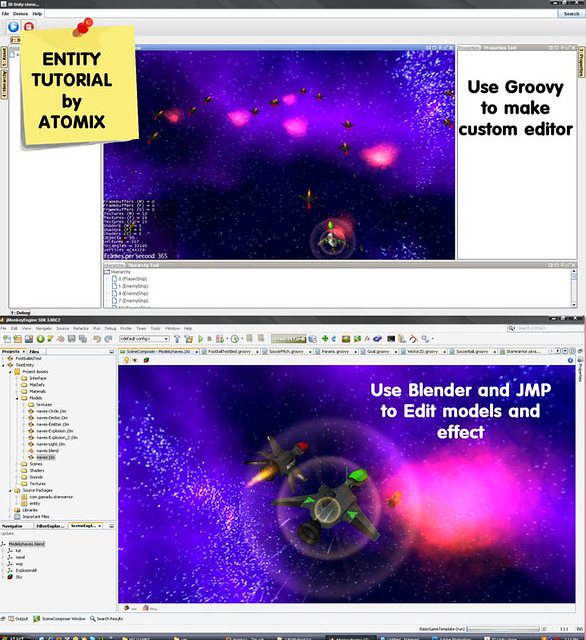As said in another topic “Entity system helps” , i recommended who want to start with this “big-ass” ES topic, first try Artemis, cause it’s easier to understand and kind of naive (simplest form) approach to the problem. After all it’s just a way to manage data and Gameobjects!
The detail of architect and specification of such ES implementation you can find in Artemis website.
What I want to give you it’s … an example. That’s what you really need to start. After all, I saw you guys struggle to find what is right and wrong, but not what you need to start a game. And hey, it can be improve from time to time but first make it work!
Yeah, this link here, download the SpaceShooter of Artemis I converted to 3D. I also change some thing and add a cool way (GUI) to watch and handle Component and System in the style of Unity. That’s what I think you should start with. And I will make another topic answer for who interest in my approach.
Keep in mind I’m nothing near a Java gurus so I just want things to work. I used a lot of external libs that may be you don’t need but you can clean up if you want. You should download the libs to use cause I clean thoose to decrease the size. With every libs in the project as bis as 100MB.
Here is the link:
For detail:
This example SHOW
- How to use a “entity framework” – here is Artemis to handle game data in JME3 game
- How to make an In-game GUI tool to help manage that data
- How to use POJO architect power to simplify all your need of DataStoring and DataDisplaying (Advanced)
This example USE - Artesmis for handling Game Objects
- Groovy for Scripting
- Groovy to make UI for an in game editor, MyDoggy for Docking Framework, Substance for LookAndFeels
- GlazedList helps work with List Event and such…
-
Cayene for POJO storing, MetaWidget for POJO display
Image:
May be when I get more familiar with the other ES approach of pspeed and the other guys i will port this example to the most popular one. Cause I also trying to learn that those “good but early stage” approachs so “zero” experience as everyone. 